
|
Jupiter has lost one of its iconic red stripes and scientists are baffled as to why. |
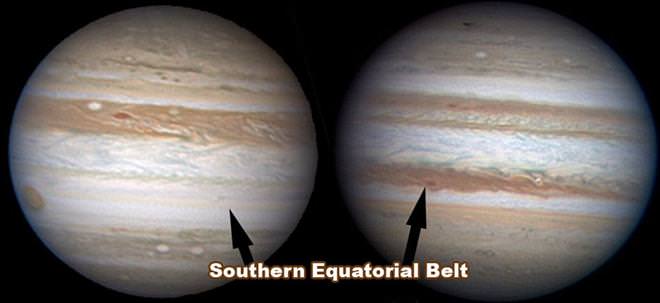 |
|
The planet is a giant ball of gas and liquid around 500million miles from the Sun. It's surface is composed of dense red, brown, yellow, and white clouds arranged in light-coloured areas called zones and darker regions called belts.
|

Enjoy This Fascinating Collection of NASA's Best Photos!
Here are 15 of NASA's most amazing recent pictures, along with brief explanations of exactly what is going on in each one.

Did You Know These Interesting Facts About Colors?
A short article explaining why and how specific colors were chosen for everyday objects like cabs and police uniforms.
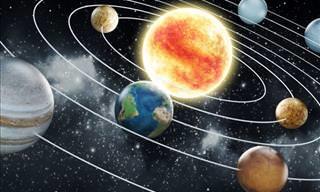
Test Your Knowledge of Our Solar Neighborhood!
This quiz will put your knowledge of our solar system to the test!
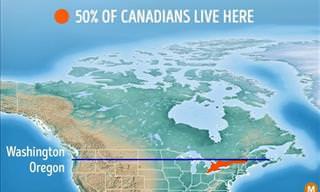
10 Cool Maps That Show How Much Unpopulated Space There Is
These maps will utterly surprise you when you realize just how unevenly the world's population is spread out. Most of the world is quite free of people!
 7:56
7:56
Asteroid Mining: Why it's the New Trillion Dollar Business
Get ready to learn how asteroid mining could potentially transform our world.
 5:06
5:06
The Only Manmade Object That Will Last Forever
This copper discus contains 116 images we launched into space for aliens to see
 2:01
2:01
What Does the Appendix Actually DO?
Dr. Berg explains, in this video, all about the appendix and what it actually does in our body.
 4:34
4:34
Fascinating Science: How Old Can We Actually Get?
All things being equal, and technology continually progressing - How old can a human body really get?
 13:55
13:55
WATCH: What Is the Fingerprint of God's Creation?
The golden pattern, describes the mathematical code of the universe. Is this the scientific evidence of God's will and plan?
 21:51
21:51
This Mind-Blowing Talk Explores the Nature of Reality
In this video, cognitive scientist, Donald Hoffman, attempts to answer this mind-blowing question in this incredible TED talk.
 6:25
6:25
These Fire Tricks Will Wow You, But Don't Try Them!
These fire tricks are incredible to look at, but please don't try this at home...
 3:10
3:10
How It's Made: Merino Wool
Long before we invented moisture-wicking synthetic fibers, this type of wool did it naturally for centuries. Here's how it's produced.

Science Proves: These 10 Bible Stories Probably Did Happen
The Bible describes many seemingly supernatural cases, but today, science can show that they might have indeed happened.

This Humanoid Robot May Join the Workforce Very Soon...
Meet Digit – a bipedal robot that's ready to join human workers at warehouses around the world as early as 2024.

12 Earliest Versions of Tech Inventions We Use Every Day
Witness the evolution of 11 popular devices we use all the time by looking at how they all started...
 9:05
9:05
A Tunnel Built by a Swarm of Robots - Jaw-Dropping!
Imagine a swarm of robots attacking a mountain and smashing it to pieces...

Chocolate Exposed! Here's What It Does to Your Brain!
Just what is it that makes chocolate so irresistible to so many people around the world? Find all of the answers in the article.

Remembering the Life and Wisdom of Stephen Hawking
Stephen Hawking possessed one of the greatest minds the world has ever seen, but was also impaired by a debilitating disease. Here are his life ant times.

These Archaeological Finds Left the World Mystified
Find out more about the most mysterious discoveries that archaeologists made.
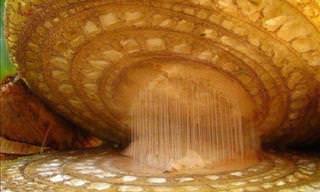
When Under a Microscope, Even Ordinary Things Seem Alien
Have you ever given any thought to what every day things look like under a microscope? Some of these images are truly beautiful - see for yourself in the images below.
 13:01
13:01
13 Incredible ROOF INNOVATIONS For Your House
Keep the roof of your house safe with these incredibly useful inventions.
 3:16
3:16
Discover How Anesthesia Affects Your Body and Mind
If you were ever curious about how exactly anesthesia works, then this video has all the answers!
 1:44
1:44
The Accidental Discovery of the World’s First Antibiotic
Not too long ago, it was fairly common to die of the simplest of wounds due to bacterial infection. Penicillin changed everything.
 4:51
4:51
The Oldest Medicines That Have Stood the Test of Time
Learn about some fascinating old medicine and general healing practices that have survived for thousands of years.
 8:24
8:24
Why is Everyone Obsessed with This Weight-Loss Tool?
Ozempic has been touted as a wonder drug for weight loss in recent months. But what's the real truth behind it?

These Will Give You True Perspective About Our World
Just to give you an idea of how big the Earth really is in true perspective to all the other heavenly bodies up there in the cosmos.
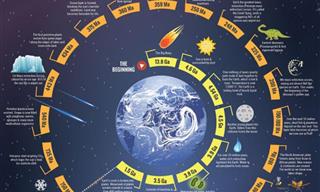
The History of Our Planet in One Beautiful Spiral...
This beautiful infographic offers us a remarkable story – the history of Planet Earth.
 1:11
1:11
The COOLEST Flames in the World - Jaw-Dropping!
Have you ever seen a flame as epic as this? Find out how it's made...

I Bet You Didn't Have a Clue About These Human Body Facts!
The human body is the most complex machine known to mankind, but I bet you don't know these 10 amazing facts about it...

Scientists Develop 'Flying Dragon' Robot to Fight Fires
Scientists in Japan have created a water-spitting 'flying dragon' robot to fight fires.
 9:31
9:31
The Channel Tunnel - The 7th Wonder of the Modern World!
The construction of the Channel Tunnel is said to be an impossible feat!
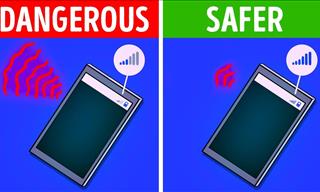 10:01
10:01
19 Things to AVOID to Make Your Phone Live Longer
19 common mistakes we all make, that make our phones age quicker.
 4:13
4:13
What Does Medicine ACTUALLY Do In the Body? Fascinating.
What really happens in our bodies when we take medicine, have you ever wondered? This video will answer your question.
 5:13
5:13
Whatever Happened to that Hole in the Ozone Layer?
Let's embark on this enlightening journey to better understand our atmosphere's health.
 3:16
3:16
You Wouldn't Believe How Far Technology Has Come
Take a look at the advancements of technology in this video. Impressive.
 9:24
9:24
These Shoes Can Boost Your Walking Speed by 250%!
Robotic engineers have created shoes that, they claim, will increase your speed by 250%.

INTERACTIVE: How Personal Items Have Changed Over Time
Some of you will be old enough to remember what many of today's objects used to look like. Here are 20 such objects. Click to see them as they used to be.
 21:07
21:07
15 Frightening Animals Early Humans Had to Live With
10 scary animals early cavemen in Africa had to deal with 200,000 years ago.

Science Breakthrough: An Immunization Against Skin Cancer?
This scientific breakthrough offers hope for those who are struggling with skin cancer. You are now invited to discover more about this revolutionary vaccine.
 2:23
2:23
Introducing the Astronauts That Were Just Launched Into Space
The two astronauts — veteran NASA fliers Bob Behnken and Doug Hurley are honored to have been on this flight. Let's get to know them!

16 Surprising Things I Never Knew About Sleeping!
Who knew there was so much we don't know about our most popular activity! Here are 16 facts you may not have known about your sleep.

These Photos Show How Dependent We are On Smartphones
Technology has taken over and these funny (but true) photos help to drive this fact home.
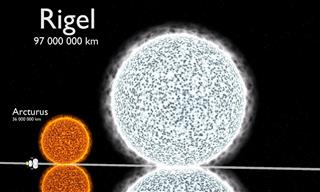 5:08
5:08
Experience the True Scale of Heavenly Bodies
Witness the true scale of planets, stars and galaxies in this incredible video that sheds light on size in our universe.
 13:00
13:00
Visual Illusions: What Color Are These Strawberries?
Tricking our brain into believing that something is one color or shape than another thing is surprisingly easy, but can we explain why?
 26:43
26:43
These 20 Tech Inventions Will Define the Next Decade
The future is here. Check out some emerging technologies that are all set to chane our world forever.

7 Little-Known Body Parts We Never Knew About
Here's a look at some of the weird and little-known body parts that you didn’t know you had.

6 Remarkable Yet Overlooked Minds That Shaped Our World
These underappreciated geniuses deserve more recognition.


